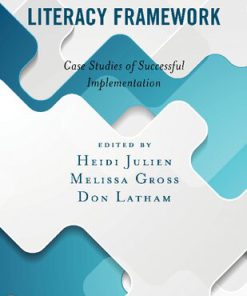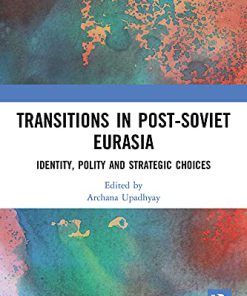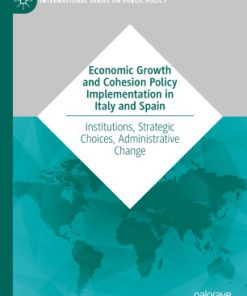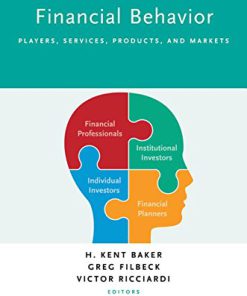Benchmarking Library Information and Education Services New Strategic Choices in Challenging Times 1st Edition by David Baker, Lucy Ellis, Caroline Williams, Cliff Wragg ISBN 0323956637 9780323956635
$50.00 Original price was: $50.00.$25.00Current price is: $25.00.
Benchmarking Library, Information and Education Services New Strategic Choices in Challenging Times 1st Edition by David Baker, Lucy Ellis, Caroline Williams, Cliff Wragg – Ebook PDF Instant Download/Delivery: 0323956637, 9780323956635
Full download Benchmarking Library, Information and Education Services New Strategic Choices in Challenging Times 1st Edition after payment
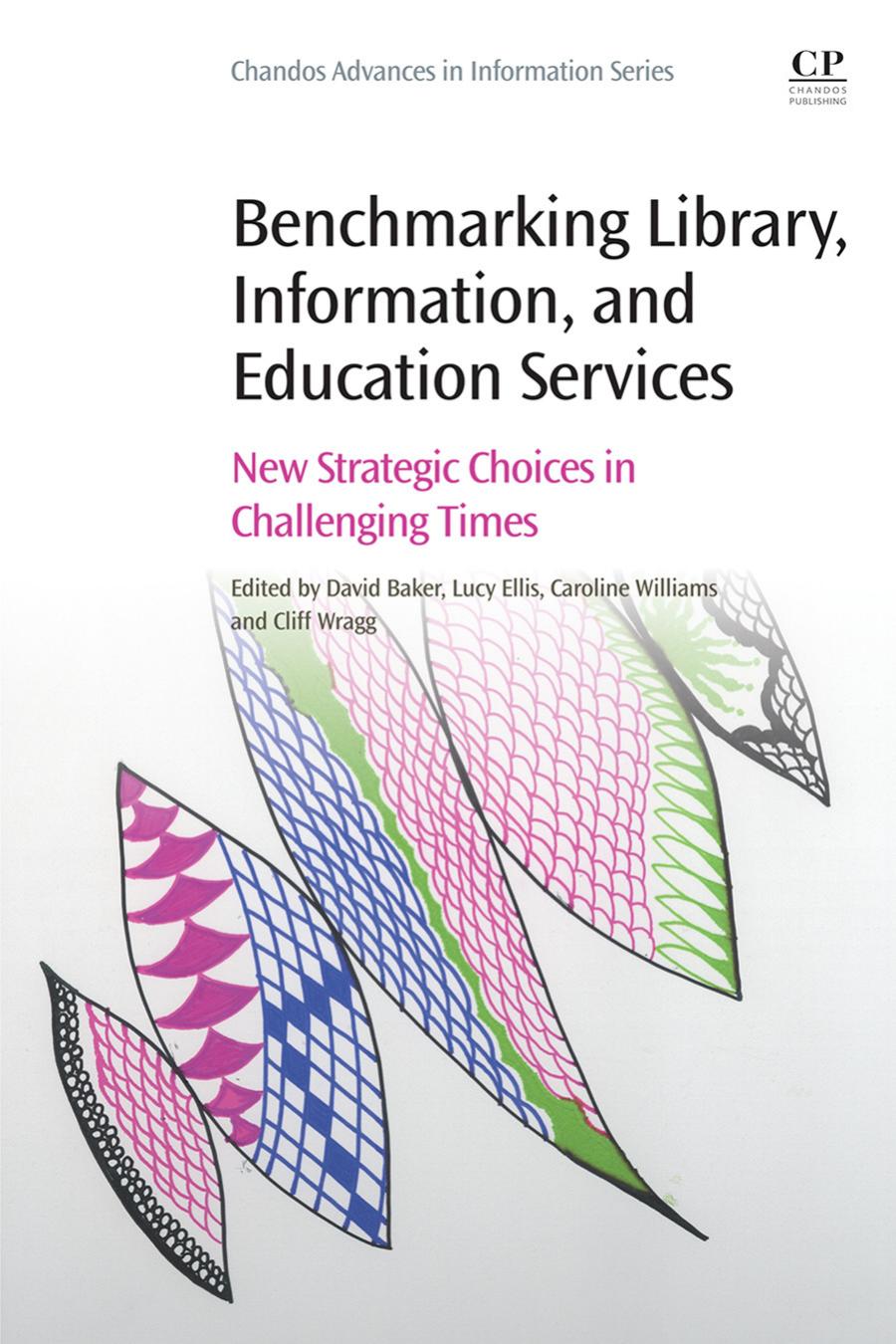
Product details:
ISBN 10: 0323956637
ISBN 13: 9780323956635
Author: David Baker, Lucy Ellis, Caroline Williams, Cliff Wragg
Benchmarking Library, Information and Education Services: New Strategic Choices in Challenging Times provides the foundations of ongoing research in the development of collections and services. The book contributes to practical outputs of general benefit to the sector, including customers, clients or stakeholders, offering ideas for how to identify comparative strengths and weaknesses and improve or enhance present practices regardless of how well institutions currently perform. The centerpiece of the book is a description, report and analysis of a major international QB exercise that culminates in a set of good practice statements.
The benefits of the QB methodology are applicable to individual institutions. Because of the current global turbulence, individuals, leaders and whole institutions are keen to learn more about what is happening and how they can develop sustainable solutions to both immediate challenges and longer-term scenarios. These include an analysis of third sector organizations, e-libraries, marketing information services, vocational training in higher education, the creative arts, and the role of partnerships in organizational openness.
- Discusses qualitative benchmarking and it’s core tenets
- Helps readers understand the experiences of others and compare their own experiences to learn and adapt practices
- Presents tactics readers can use to identify their organization’s professional identity, value and purpose
- Provides an idea of what the future state of library, education and public services will look like
Benchmarking Library, Information and Education Services New Strategic Choices in Challenging Times 1st Table of contents:
1.1 Introduction
1.2 The need for frameworks
1.3 Benchmarking
1.4 Qualitative benchmarking
1.5 Conclusion
References
Part One: Qualitative benchmarking: process and concept
Chapter two. Qualitative benchmarking in context: environment and outlook
Abstract
2.1 Introduction
2.2 Libraries, digital information, and COVID
2.3 Place and space: physical, digital, hybrid
2.4 People
2.5 Financial sustainability: paying for it all
2.6 Conclusion
References
Chapter three. Why qualitative benchmarking?
Abstract
3.1 Introduction
3.2 Background and context
3.3 Benchmarking in library and information services
3.4 Why qualitative benchmarking?
3.5 Concluding remarks
References
Chapter four. The four P’s framework: benchmarking across dissimilarities
Abstract
4.1 Introduction
4.2 Integral vision
4.3 A hypothetical case method
4.4 A word of caution
4.5 Conclusion
References
Part Two: The international benchmarking exercise
Part Two—The international benchmarking exercise
1 Introduction
2 Our approach to qualitative benchmarking
3 Major findings and outputs
4 Good practice statements
5 Review and reflection
6 Outcomes
7 Further areas for discussion
8 The review
9 Concluding remarks
Reference
Part Three: Sector-leading ideas arising from the exercise
Chapter five. The power of place
Abstract
References
Chapter six. Resilience, retention, and return of staff: the case of Stellenbosch University Library
Abstract
6.1 Introduction
6.2 South Africa’s national lockdown levels
6.3 Management of staff during various phases of lockdown
6.4 Staff development and empowerment
6.5 Return of staff to work on-site
6.6 Conclusion
References
Chapter seven. Benchmarking on the fly and new ways of working: leveraging benefits from the pandemic experience
Abstract
7.1 Introduction
7.2 Context and background
7.3 Theme 1—Learning from others quickly or “benchmarking on the fly”
7.4 Theme 2—Health, safety, and wellness (HSW) risk management is good management
7.5 Theme 3—Business continuity planning and prioritizing
7.6 Theme 4—Service development becomes business as usual
7.7 Theme 5—Connected and situational leadership and decision-making
7.8 Theme 6—Engagement not communication
7.9 Leveraging benefits from the pandemic experience
Acknowledgment
References
Chapter eight. One library within one university: embedding a one library approach and vision
Abstract
8.1 Introduction
8.2 The one library imperative
8.3 The case study
8.4 Developing our one library approach
8.5 Developing a new library strategy
8.6 Building our new team
8.7 Keeping people informed and supported
8.8 Engaging with our stakeholders
8.9 Successful transition
8.10 Where are we now—18 months on?
8.11 What about the library team?
8.12 Conclusions
References
Chapter nine. Cultivating agility and resilience over time
Abstract
9.1 Introduction
9.2 Pandemic measures at HKUST library
9.3 Practices that cultivate organizational agility
9.4 Conclusion
References
Part Four: New applications of benchmarking
Section A: Benchmarking in different contexts
Chapter ten. Library partnerships in an age of openness
Abstract
10.1 Introduction
10.2 The British Library and its partnerships
10.3 COVID and post-COVID
10.4 The future
References
Chapter eleven. Lessons in leadership from third sector organizations
Abstract
11.1 Introduction
11.2 A note on report conventions and anonymity
11.3 Interviews and areas of investigation
11.4 Research findings
11.5 Conclusion
Appendix 1 Interview questions
References
Chapter twelve. Fast forward or digital mirage—benchmarking education system responses to COVID, and what comes after?
Abstract
12.1 Introduction
12.2 The promise and peril of edtech
12.3 COVID-19 and the education system response
12.4 Case study—Edtech Demonstrator Program
12.5 Case study—Association of Commonwealth Universities
12.6 A forward and backward look
References
Chapter thirteen. Planning for continuity, aiming for sustainability: libraries in the forefront of disruption
Abstract
13.1 Introduction
13.2 Libraries and business continuity
13.3 Libraries, business continuity, and sustainability
13.4 Conclusions
References
Chapter fourteen. Benchmarking for effective services in Nigeria
Abstract
14.1 Introduction
14.2 COVID-19 in Africa
14.3 Methodology
14.4 Library services during the COVID pandemic
14.5 Benchmarking in Nigerian libraries
14.6 COVID-19 and benchmarking in Nigeria
14.7 How benchmarking can affect library services
14.8 Conclusion
References
Chapter fifteen. Benchmarking the impact, quality, and value of an academic online e-Library
Abstract
15.1 Introduction
15.2 Our vision: to be the center of excellence for built environment education
15.3 Library and information services
15.4 What is an online e-Library?
15.5 UCEM’s library mission statement
15.6 Benchmarking
15.7 What is benchmarking? Reviewing the literature
15.8 Further definitions
15.9 Defining benchmarks and statistics
15.10 How do you measure success of change?
15.11 New ways of working—library provision over the COVID-19 pandemic period
15.12 Copyright licensing agency, digital content store
15.13 Quality assurance and benchmarking
15.14 The importance of establishing networks and key contacts
15.15 Recognition, accreditation, and awards
15.16 Matrix accreditation
15.17 At the hub of things—no student left behind
References
Bibliography and further reading
Chapter sixteen. Information users as active prosumers: perspectives from social marketing and sociocultural value for academic libraries’ benchmarking processes
Abstract
16.1 Introduction
16.2 Active users (prosumers) as the central focus of social marketing in academic libraries
16.3 Benchmarking processes and the sociocultural contribution of academic libraries
16.4 Conclusions
References
Chapter seventeen. Supporting research information management: overcoming the inherent culture gap between traditional library ethics and the management of CRIS systems
Abstract
17.1 Introduction: about research information management systems
17.2 The connection with libraries
17.3 The challenge
17.4 Not a threat but an opportunity
17.5 Skills and ethics
17.6 Conclusion
References
Chapter eighteen. Best practices for developing and disseminating audiovisual contents to promote library and information services
Abstract
18.1 Introduction
18.2 Preproduction
18.3 Production
18.4 Editing and postproduction
18.5 Dissemination and sharing
18.6 Conclusion
Section B: Benchmarking vocational elements of Higher Education
Chapter nineteen. Life experience of mature students and its relevance to leaders in making good strategic choices in higher education
Abstract
19.1 Introduction
19.2 Rationale for the benchmarking questions
19.3 A unique set of characteristics
19.4 A case study of a selected NCL student
19.5 Harnessing work experience for learning
19.6 Experiential learning
19.7 Case study: NCL teaching practices framework
19.8 Conclusion
References
Chapter twenty. Micro-credentials: need to be benchmarked across institutions
Abstract
20.1 Introduction
20.2 Defining micro-credentials
20.3 Rationale for micro-credentials
20.4 Challenges
20.5 Recognition
20.6 Quality assurance
20.7 UK-based micro-credentials models
20.8 Private company learning platforms
20.9 Regulation and benchmarking of micro-credentials
20.10 Conclusion
References
Chapter twenty-one. Strategic planning for digital submissions for institutions with creative arts programs: considerations, challenges, and routes to benchmarking
Abstract
21.1 Introduction
21.2 Electronic management of assessment
21.3 Benchmarking for digital submissions in the creative arts
21.4 Conclusion
Appendix : Social media platforms
References
Part Five: Conclusions and the future of benchmarking
Chapter twenty-two. Qualitative benchmarking and the future
Abstract
22.1 Introduction
22.2 Key themes
22.3 Key attributes and approaches for the future
22.4 Strategic choices and the new qualitative benchmarking
22.5 Conclusion
People also search for Benchmarking Library, Information and Education Services New Strategic Choices in Challenging Times 1st:
benchmarking library, information and education services
benchmarking library information and education services
library benchmarking example
c benchmark library
c benchmarking
Tags:
David Baker,Lucy Ellis,Caroline Williams,Cliff Wragg,Benchmarking Library,Information,Education Services,Strategic Choices,Challenging Times
You may also like…
Relationships & Lifestyle - Relationships
Education Studies & Teaching - School Education & Teaching
Pedagogy Education and Praxis in Critical Times Kathleen Mahon
Reference - Library & Information Science
History - Russian & Soviet History
Politics & Philosophy
Uncategorized
Cookbooks
Business & Economics - Industries
Financial behavior : players, services, products, and markets 1st Edition Baker
Politics & Philosophy - Government & Politics
Impeachment an American history First Edition, Modern Library Edition Baker





